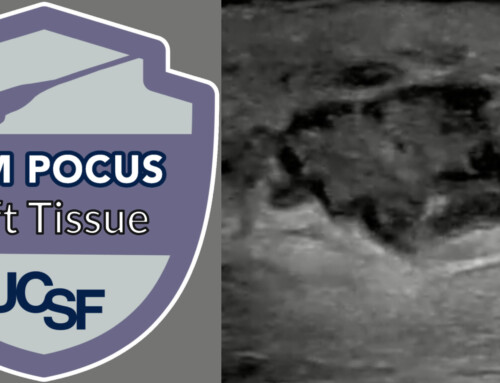 A 2-month old boy was brought in by his mother after an episode of the child’s face turning blue and a pause in breathing. Mom reports this lasted a few seconds. The mother was terrified, so she brought the baby to the ED.
A 2-month old boy was brought in by his mother after an episode of the child’s face turning blue and a pause in breathing. Mom reports this lasted a few seconds. The mother was terrified, so she brought the baby to the ED.
Sometimes infants briefly stop breathing or go limp. How do we determine if an infant is low-risk for serious illness? Earlier last year, the American Academy of Pediatrics (AAP) released guidelines on the evaluation and management of Brief Resolved Unexplained Events (BRUE, replacing a 30-year old label “apparent life-threatening event” or ALTEs).1
1. Goodbye ALTE
ALTEs were first described in the 1980s to replace near-miss sudden infant death syndrome (SIDS), and was loosely defined as:
“An episode that is frightening to the observer and that is characterized by some combination of apnea (central or occasionally obstructive), color change, marked change in muscle tone (usually marked limpness), choking, or gagging. In some cases, the observer fears that the infant has died.”
Over time, researchers determined that these parent-reported events were not precursors for SIDS, and that a majority of these infants have very low risk of having a serious underlying disorder.2
2. Hello BRUE
A BRUE (pronounced “brew”) is:
- An event in an infant < 1 year of age
- Sudden and brief < 1 minute (typically 20-30 seconds)
- A resolved episode of one or more of the following:
- Central cyanosis or pallor
- Absent, decreased, or irregular breathing
- Marked changes in tone (hypertonia or hypotonia)
- Altered level of responsiveness
- Diagnosed when there is no other explanation on history and physical (diagnosis of exclusion)
- For a broad differential of other explanations, Emergency Physician’s Monthly has a great review.3
Let’s practice:
|
Who are lower risk infants?
Infants who meet all of the following criteria:
- Age > 60 days
- Gestational age ≥ 32 weeks and post-conceptional age ≥ 45 weeks
- First BRUE (no history of BRUEs)
- Duration < 1 minute
- Event did not require CPR by trained medical professional
- No concerning history or physical exam findings (Guideline Table 2)
Who are higher risk infants?
- Those not meeting all of the above criteria (e.g., age ≤ 2 months, prematurity, etc.)
- History concerning for child maltreatment
- Family history of sudden death in first degree relatives
- Social and environmental issues
- House mold problems
- Previous Child Protective Services or Law Enforcement involvement
III. What should I do after I risk-stratify my patient?
Management of lower risk infants with BRUE
In summary, there is no need to engage in unnecessary tests or treatments. Instead, the following are recommended (see Figure 1 below):
- Educate caregivers about BRUEs (English; Spanish)
- Provide CPR training resources (Red Cross; American Heart Association)
- May briefly monitor (1-4 hours “reasonable” although no solid evidence) with serial exams, continuous pulse oximetry, 12-lead ECG, and pertussis testing (in areas of under-immunization)
- Avoid hospitalization solely for cardiopulmonary monitoring
- Disposition: Potential safe discharge home if family is comfortable and child may be re-evaluated within 12-24 hours.
Management of higher risk infants with BRUE
Just because an infant is high-risk in general may not mean they will be high risk when it comes to BRUE. Research is just beginning to quantify this risk. Since current evidence is insufficient, the AAP guidelines do NOT provide management recommendations for higher-risk infants.
We recommend that you use your evaluation to guide your management, which may include:
- Developing a broad differential (e.g., non-accidental trauma, gastroesophageal reflux, respiratory infection) and determining a focused work-up (e.g., skeletal survey).
- Hospitalization

Figure 1: Diagnosis, risk classification, and recommended management of a BRUE (adapted from Tieder JS et al, 2016).1 *See Tieder JS et al, 2016 Tables 3 and 4 for the determination of an appropriate and negative FH and PE. **See Tieder JS et al, 2016 Figure 2 for the AAP method for rating of evidence and recommendations.
IV. In summary: ALTE vs. BRUE – What’s new?
| ALTE | BRUE | |
| Definition | Both a chief complaint and a diagnosis | Diagnosis of exclusion (based on clinician rather than caregiver perception) |
| An episode that appears potentially life-threatening to the observer characterized by any of the following inclusion criteria | An event occurring in infant <1 year (new upper age limit) where:
| |
| Inclusion Criteria (any one finding) | Color change | Cyanosis or pallor (more specific) |
| Apnea (hard for parents to measure) | Absent, decreased, or irregular breathing (more specific) | |
| Alteration in muscle tone | Marked change in tone – hypertonia or hypotonia (determined by clinician) | |
| Choking or gagging (not part of new BRUE definition) | Altered level of responsiveness (new criteria) | |
| Low Risk Criteria | n/a |
|
Take Home Points
Goodbye ALTE and hello BRUE! The new AAP definition of BRUE shifts the definition from a caregiver to a clinician-based perspective. This hopefully reduces the confusion amongst families (and providers). A note of caution, the BRUE definition excludes cases where the infant is still symptomatic or when there is an explanation for the event.
This shift in focus allows providers to identify lower-risk BRUE patients, who do not warrant a broad diagnostic workup and prolonged observation period.





